 The traditional medical system has no cure or prevention for Alzheimer’s.
The traditional medical system has no cure or prevention for Alzheimer’s.
So, quite a bit of research is put into finding lifestyle factors that help.
A new study published in the journal Alzheimer’s & Dementia has pinpointed the absolute best thing you can do to protect your brain… even reverse early onset.
And it’s quite easy to do… you already know how — just do it.
Alzheimer’s disease doesn’t just appear suddenly.
In fact, changes in the brain can begin up to two decades before any symptoms show up.
This “silent phase” is exactly why researchers are so interested in what happens during our middle years, as it is potentially our best window for prevention.
The authors of this study decided to focus on the link between physical activity in middle age (ages 45 to 65) and Alzheimer’s disease pathologies, such as the accumulation of beta-amyloid — a hallmark of the disease.
Their study involved 337 cognitively unimpaired adults, all part of the ALFA+ longitudinal cohort from the Barcelonaβeta Brain Research Center in Spain.
Participants were initially assessed for physical activity levels, dividing them into five groups:
-
• Sedentary (no physical activity)
• Insufficient physical activity
• Adhering to World Health Organization (WHO) activity guidelines
• Starting with adherence but later becoming inactive
• Starting inactive but becoming adherent to WHO guidelines
The researchers measured amyloid-PET burden (a key biomarker for Alzheimer’s) and cortical thickness in the medial temporal lobe (an area particularly vulnerable to Alzheimer’s-related changes) to evaluate the impact of physical activity on brain integrity.
They tracked these characteristics over a follow-up period of approximately four years.
The findings were striking:
-
• Participants who increased their physical activity to meet WHO recommendations had lower levels of beta-amyloid in their brains compared to those who remained sedentary or reduced their activity. This suggests that higher physical activity during midlife helps prevent or reduce the accumulation of Alzheimer’s biomarkers.
• Those who remained sedentary showed a significant loss of cortical thickness in the medial temporal lobe — a brain region associated with Alzheimer’s.
• Conversely, participants who were physically active, particularly those who became adherent to WHO guidelines, showed greater cortical thickness, indicating healthier brain structures.
• There was a clear, dose-dependent relationship between physical activity and amyloid burden.
In other words, the more active the participants were, the lower their amyloid levels — further underscoring the potential protective effects of physical activity.• Even those doing limited exercise below WHO recommendations had better brain measurements than completely sedentary individuals.
• Starting to meet exercise guidelines after being inactive appeared the most beneficial for brain health.
So, boost your physical activity and make sure that you meet or exceed the WHO’s exercise recommendations of 150 minutes of moderate to strenuous exercise per week if you want to prevent Alzheimer’s later.
But the main reason why exercises protect you from Alzheimer’s, and may help reverse early onset, is often misunderstood.
It’s because it loads your brain with one nutrient that is absolutely essential for brain health.
I’ve developed a simple set of exercises designed to directly load your brain with this nutrient, without strenuous workouts.

 Overcoming IBD
Overcoming IBD Multiple Sclerosis
Multiple Sclerosis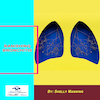 Banishing Bronchitis
Banishing Bronchitis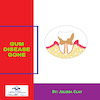 Gum Disease Gone
Gum Disease Gone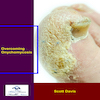 Overcoming Onychomycosis
Overcoming Onychomycosis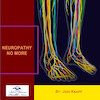 Neuropathy No More
Neuropathy No More The Prostate Protocol
The Prostate Protocol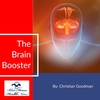 Brain Booster
Brain Booster
 Ironbound
Ironbound
 Solution for Shingles
Solution for Shingles
 The Bone Density Solution
The Bone Density Solution
 The Ultimate Healing Protocol
The Ultimate Healing Protocol
 The Parkinson's Protocol
The Parkinson's Protocol
 The Chronic Kidney Disease Solution
The Chronic Kidney Disease Solution
 Overthrowing Anxiety
Overthrowing Anxiety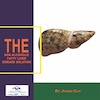 The Fatty Liver Solution
The Fatty Liver Solution The Hypothyroidism Solution
The Hypothyroidism Solution
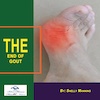 The End of Gout
The End of Gout The Blood Pressure Program
The Blood Pressure Program
 The Oxigized Cholesterol Strategy
The Oxigized Cholesterol Strategy
 Stop Snoring And Sleep Apnea Program
Stop Snoring And Sleep Apnea Program
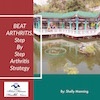 The Arthritis Strategy
The Arthritis Strategy The Vertigo & Dizziness Program
The Vertigo & Dizziness Program The 3-Step Diabetes Strategy
The 3-Step Diabetes Strategy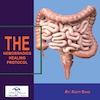 Hemorrhoids Healing Protocol
Hemorrhoids Healing Protocol The Erectile Dysfunction Master
The Erectile Dysfunction Master Weight Loss Breeze
Weight Loss Breeze The IBS Program
The IBS Program The Insomnia Program
The Insomnia Program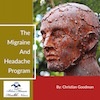 The Migraine and Headache Program
The Migraine and Headache Program The Neck Pain Solution
The Neck Pain Solution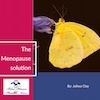 The Menopause Solution
The Menopause Solution The Ejaculation Master
The Ejaculation Master The TMJ Solution
The TMJ Solution The Acid Reflux Solution
The Acid Reflux Solution The Fibromyalgia Solution
The Fibromyalgia Solution The Psoriasis Strategy
The Psoriasis Strategy